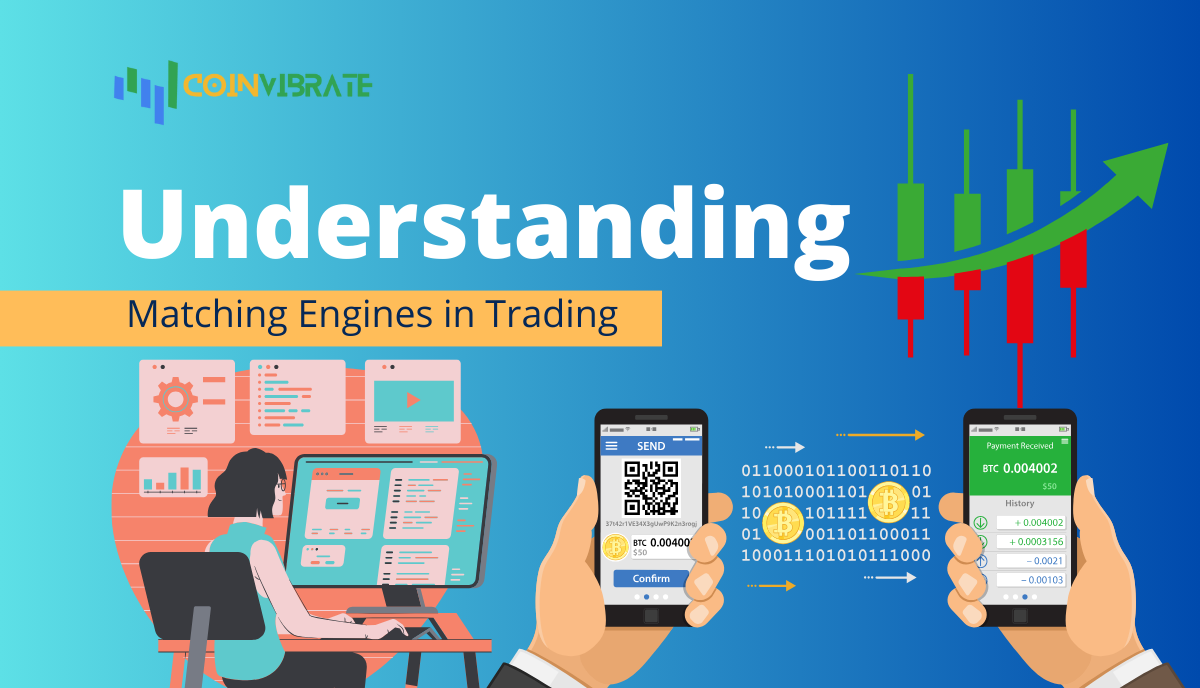Have you ever wondered how orders to buy and sell on stock or cryptocurrency exchanges somehow become completed trades? The understanding matching engines in trading.
This is made possible by something known as a matching engine.
Table of Contents
Read More: What is Ethereum and its Key Features of Ethereum?
What is a Matching Engine?
A matching engine is essentially an advanced software platform that connects buyers and sellers in financial markets. See it as the agent of the trading world, bringing together buyers and sellers and vice versa. Its main goal is to quickly and effectively complete trades, leveling the playing field for all market players.
Matching Engines vs. Traditional Methods
Order matching and trading depended significantly on manual procedures and phone calls in the past. Comparing such systems to the advanced matching engine systems we use today, they were far more time consuming and had more possibilities of human error. Trades can be matched and executed quickly and fairly by modern matching engines.
How Does a Matching Engine Work?
Imagine a busy market place where sellers are yelling offers and bids. This mess is replaced in the digital world by a peaceful order. Traders record their purchase and sell purposes in the order book by entering them. At this point, the matching engine gets involved by examining the conditions and linking together orders that are compatible. The matching algorithm, which is the brains behind the operation, prioritizes tasks based on established guidelines. The (FIFO) “first-in, first-out” rule is among the most often used guidelines. The orders that come first are given priority, just as when you’re in line waiting at the grocery store. “Pro-Rata,” another plan, encourages larger orders by guaranteeing that they receive a suitably larger amount of the available liquidity.
Order Matching Algorithms
The operation of a matching engine is defined by order matching algorithms. Let’s look at a few examples:
First in, first out (FIFO)
FIFO, also referred to as (FCFS) “first-come, first-serve”, is the traditional algorithm that ranks orders according to their cost and time of production. The order that arrived first gets matched first when numerous orders are created at the same price, guaranteeing execution fairness.
Pro-Rata
A twist is added by the Pro-Rata algorithm, which favors larger orders. Which means that the order which has a higher traded quantity will be executed and processed first if two orders are pending at the same time and same price.
Time Weighted Average Price (TWAP)
TWAP-based algorithms determine the average price of all orders placed during a specific time frame, then slowly execute a number of trades to reach that average price. By dividing large orders into smaller orders that will ultimately reach the same average price as the initial order, TWAP algorithms can lessen the impact of larger orders.

Types of Matching Engines
Centralized matching engine
Real-time matching with great speed and efficiency is provided by centralized matching engines. They quickly perform orders because they run on a single central server, which makes them perfect for high-traffic exchanges where fast matching is important.
Decentralized matching engine
Peer-to-peer networks run decentralized matching engines, which make them resistant to attacks. They may give up some speed and efficiency in comparison to their centralized counterparts, even though they help create a more secure trading environment. Since there is no central server, there is less chance of a breach, which makes them a safer option.
Choosing the Right Matching Engine
Speed
A centralized engine performs extremely well at matching orders quickly for platforms that have high trading volumes. A decentralized engine, on the other hand, that depends on a peer-to-peer network might operate more slowly.
Security
A decentralized engine that runs on a distributed network provides more resistance against attacks, whereas a centralized engine is exposed to attacks because it depends on a central server.
Fees
Because centralized engines require more infrastructure and resources, their prices are usually greater. On the other hand, decentralized engines that run on a peer-to-peer network typically have cheaper costs.
Why Matching Engines Matter
Matching engines are essential in the fast paced world of trading, where milliseconds may result in major changes. This is why they are important:
Efficient order execution
Quick order execution is provided by a quality matching engine. It is necessary to be able to handle orders quickly, particularly in an environment where every millisecond matters.
Fairness and transparency
Matching engines maintain fairness by encouraging transparency in trade execution through the use of established algorithms to determine order priority. Traders can depend on orders being handled fairly and in accordance with set guidelines.
Market liquidity
Matching engines promotes transactions between buyers and sellers, hence promoting market liquidity. Effective order matching can create liquidity, which can make the market more responsive.
Read More: What is Bitcoin and its Explanation?
Wrap-Up About Matching Engines in Trading
Matching engines, while sometimes ignored, is an example of the accuracy and intelligence that supports current trading systems. The invisible force that keeps the market’s gears working smoothly and enables traders to carry out business quickly, fairly, and effectively is known as a matching engine.

